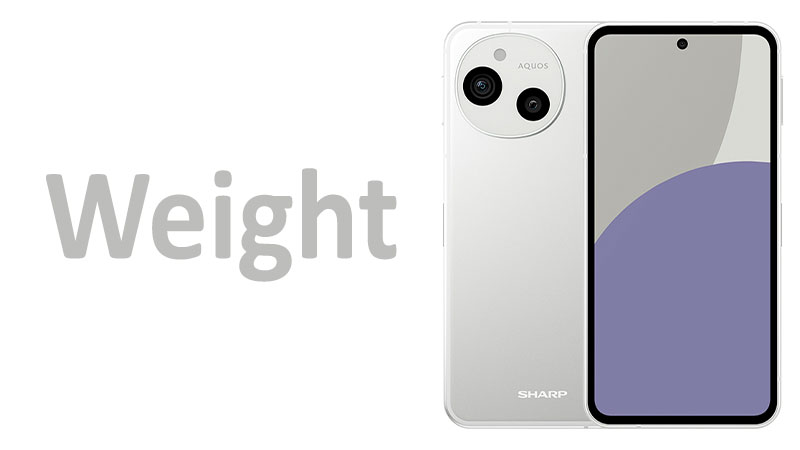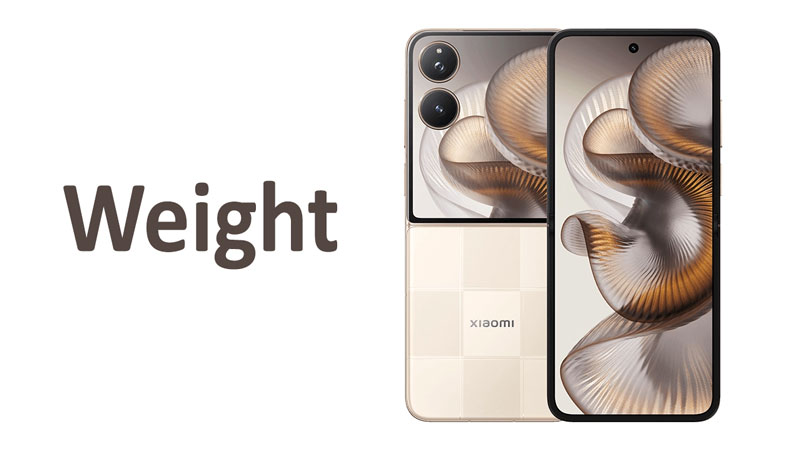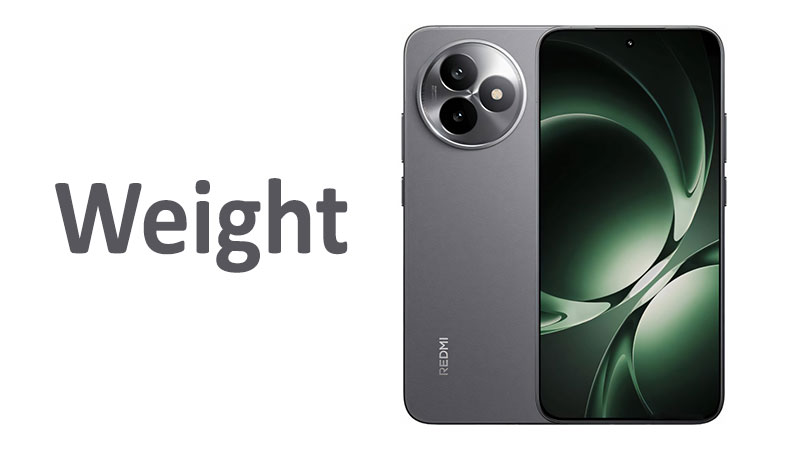The Sharp Aquos sense9 weight stands out as a key feature in today’s often-heavy smartphone market. At a precise 166 grams (g), this device positions itself as a remarkably lightweight contender. This comfortable weight translates to 5.86 ounces (oz), offering excellent portability without sacrificing crucial features like battery life or screen size. Understanding the weight is essential for any potential buyer. It impacts everything from one-handed comfort to pocketability and long-term use fatigue. This analysis explores how Sharp achieved this ergonomic balance, compares the sense9 to its competition, and details what this specification truly means for the daily user. We dive deep into the design philosophy that makes the Sharp Aquos sense9 a notable choice for those prioritizing a light, easy-to-handle device.
Understanding the Sharp Aquos sense9 Weight Specification
The weight of a smartphone is often overlooked but profoundly affects the user experience. Sharp focuses heavily on user comfort with its sense series, and the Aquos sense9 continues this tradition. The device registers exactly 166 grams, a measurement that places it firmly in the lightweight category for modern smartphones. This low mass is particularly impressive considering the phone’s robust internal hardware and battery capacity.
The Significance of 166 Grams
A weight of 166 grams is a critical psychological and physical threshold for many consumers. Phones exceeding 200 grams often feel cumbersome, especially during extended use. The 166g weight ensures that the Sharp Aquos sense9 remains comfortable during long scrolling sessions, video calls, or mobile gaming. It provides a feeling of nimbleness and ease of handling. Users can easily manage the phone one-handed without fatigue developing quickly. This ergonomic choice contrasts sharply with the bulkier flagship models currently dominating the market. Sharp deliberately designed the sense9 for optimal daily use, where portability is paramount.
Conversion to Ounces and Pounds
While most international manufacturers list weight in grams, users in countries like the United States may prefer the Imperial system. The 166g Sharp Aquos sense9 weight converts directly to approximately 5.86 ounces (oz). This figure helps frame the phone’s lightness against other household items. Furthermore, 166 grams equals about 0.366 pounds (lbs). Comparing 5.86 ounces to competitors often highlights the sense9’s efficiency. Many rival mid-range devices frequently weigh between 6.5 and 7.5 ounces. This notable difference makes the Sharp Aquos sense9 an attractive option for weight-sensitive buyers.
Design, Materials, and the Quest for Lightness
The achievement of the 166g Sharp Aquos sense9 weight is not accidental. It results from intentional design choices and advanced material engineering. Sharp did not simply reduce components; they optimized the entire form factor. The phone’s dimensions are compact, measuring 149 mm (H) x 73 mm (W) x 8.9 mm (D). These compact dimensions minimize the material needed for the chassis. This combination of streamlined size and clever construction allows Sharp to keep the mass low. The design prioritizes a comfortable grip and manageable width, contributing significantly to the overall perception of lightness.
The Role of Aluminum in the Sense9’s Chassis
Sharp utilizes an aluminum frame and back for the Aquos sense9. This material choice is fundamental to the phone’s weight management. Aluminum is naturally light but also offers superior structural integrity compared to plastic. Using aluminum instead of steel or heavy glass for the back panel helps shave off crucial grams. This decision allows the phone to feel premium and durable without adding unnecessary bulk. The aluminum chassis also plays a role in heat dissipation. This means the phone can maintain performance even under heavier loads, all while staying lightweight.
Dimensions and Form Factor: Contributing to Comfort
The physical size, or form factor, of the Aquos sense9 directly influences its low weight. At 6.1 inches, the display size is slightly smaller than the 6.7-inch or 6.8-inch standard seen on many larger phones. This smaller area requires less material for the screen, frame, and back. The 8.9 mm thickness is slightly above average for some ultra-slim phones, but it is necessary to house the large battery. Sharp chose this specific balance of dimensions. They created a phone that feels solid in the hand but remains easy to operate. This careful equilibrium of size, thickness, and material is the true engineering feat behind the 166 grams specification.
Sharp Aquos sense9 Weight Comparison: Outperforming the Competition
Evaluating the 166g Sharp Aquos sense9 weight requires context. We must compare it to its predecessor and current rivals. This specialized comparison highlights the engineering advances Sharp achieved in maintaining lightness while boosting performance and battery life. The sense9’s light build is especially notable because it contains a large 5,000 mAh battery. Historically, such a large power cell inevitably drove a phone’s weight past the 180-gram mark.
Comparison with the Predecessor: Aquos sense8
The Sharp Aquos sense8, the previous model, had a weight of 159 grams. The Aquos sense9 gained a marginal 7 grams, reaching 166g. This small increase is highly significant because of the major component upgrades in the sense9. The sense9 features a significantly more powerful Snapdragon 7s Gen 2 processor, a more advanced Pro IGZO OLED display with a variable refresh rate up to 240Hz, and a dual 50MP camera setup. Crucially, the sense8 also had a large battery, but the sense9 integrates a much brighter screen and a more powerful chipset, which usually adds weight due to increased cooling needs and battery structure reinforcement. The slight weight gain is a fair trade-off for the substantial performance and display enhancements. Sharp successfully kept the phone within the same comfort range, demonstrating impressive material optimization.
Comparing Against Mid-Range and Flagship Competitors
When comparing the Aquos sense9 to its market rivals, the 166g Sharp Aquos sense9 weight advantage becomes clearer. Most modern mid-range and flagship devices frequently exceed 185 grams. Many popular flagship models push past 200 grams. For example, some large flagship phones can weigh around 220g or more. Even smaller-sized, non-Pro flagships often settle around 187g to 195g. The sense9’s 166g weight gives it a distinct competitive edge in comfort. Users who carry their phone in a shirt pocket or use it for extended periods will immediately notice the difference. This makes the Aquos sense9 a strong option for users who prioritize mobility and a lighter carry. The light weight makes it feel less like a burdensome tool and more like an extension of the hand.
The Battery-to-Weight Ratio Analysis
One of the most impressive aspects of the Sharp Aquos sense9’s design is its battery-to-weight ratio. The device includes a large 5,000 mAh battery. This capacity is typically associated with much heavier smartphones. The industry standard often suggests a phone with a 5,000 mAh battery will weigh over 190 grams. Sharp’s ability to keep the total mass at 166g is due to its material innovation and compact component layout. This excellent ratio means the user gets two-day battery life performance without the accompanying weight penalty. This balance of power and portability is a major selling point for the Sharp Aquos sense9. It eliminates the common compromise between battery longevity and ergonomic comfort.
Pros and Cons of the Sense9’s Weight
The lightweight nature of the Sharp Aquos sense9 is generally a benefit, but it does carry some trade-offs. It is important for buyers to understand both the advantages and the potential disadvantages of a phone that weighs only 166g. These factors often determine suitability for different user preferences. A lighter phone suits some users perfectly, while others prefer the heft of a heavier device.
Advantages: Superior Portability and Comfort
The primary benefit of the 166g Sharp Aquos sense9 weight is its superior comfort. The phone is exceptionally comfortable for one-handed use, reducing strain on the wrist and fingers. Extended sessions of reading, browsing, or gaming become significantly less tiring. The phone’s lightness also improves its portability. It slips easily into pockets without creating a noticeable drag or bulge. This enhanced pocketability is a major plus for travelers or those who dislike carrying bags. The reduced weight can also improve safety. If the phone slips from your grasp, the lower kinetic energy upon impact may result in less severe damage than a heavier device. The comfortable grip makes dropping less likely in the first place.
Disadvantages: Perceived Durability and Premium Feel
Some consumers associate weight with premium quality and robust build. A lighter phone like the 166g Aquos sense9 may be perceived as less premium or more fragile by some users. While Sharp mitigates fragility with MIL-STD compliance, the initial feel of the device can be different. Flagship phones often use heavier stainless steel frames to achieve a denser, more substantial feel. The Aquos sense9 uses aluminum, which, while durable, does not offer the same heavy, cold sensation of steel. Another minor disadvantage can be noticed during media consumption. Some users find that a heavier phone helps dampen vibrations from stereo speakers, leading to a more stable experience when watching videos. However, these points are subjective and depend heavily on individual user preference.
Key Considerations for the Sharp Aquos sense9 Buyer
The 166g Sharp Aquos sense9 weight is a central characteristic, but it interacts with many other features. A potential buyer must look at the overall package to make an informed decision. Understanding how the phone’s weight influences daily interactions is vital. Sharp designed the sense9 as a practical, reliable device, and its weight reflects this philosophy.
Impact on One-Handed Use and Extended Sessions
The compact dimensions (149 mm high) combined with the light weight make the Aquos sense9 a champion for one-handed operation. Users can reach a significant portion of the screen without needing to adjust their grip or risk dropping the device. For individuals who use their phone for hours daily, such as reading e-books or listening to podcasts while multitasking, the reduced weight is a huge relief. The low mass prevents the finger fatigue often reported by users of phones over 200g. This is a crucial factor for users with smaller hands or for those who use their phone while lying down.
Weight vs. Durability: MIL-STD Compliance
Despite its lightweight design, the Sharp Aquos sense9 does not compromise on ruggedness. This is an important detail for buyers concerned about a seemingly light build. The phone boasts an IP68 rating for dust and water resistance. More impressively, it conforms to MIL-STD-810H standards for shock resistance (MIL-STD-810G for drop resistance). This military-grade compliance means the phone is built to withstand accidental drops up to 1.2 meters. Sharp’s engineering allows for a strong structure using light aluminum. The shock-absorbing construction ensures that the internal components are protected, negating the myth that a lighter phone is necessarily less durable. Buyers get the best of both worlds: light weight and proven ruggedness.
Carrying Comfort and Pocketability
The Aquos sense9 excels in carrying comfort. The phone is small enough to fit comfortably in most trouser pockets without sticking out. The light weight ensures that the phone does not constantly pull down on the fabric of lighter clothing, such as shorts or summer dresses. This is a practical consideration for everyday mobility. Many large, heavy phones require users to carry them in bags or outerwear. The Sharp Aquos sense9’s 166g weight and compact size allow for true freedom and convenience in how it is carried throughout the day.
The Technology Behind the Balance
Achieving the 166g Sharp Aquos sense9 weight with a 5,000 mAh battery and premium features required clever internal technology. Sharp employs several unique components and design philosophies to minimize mass while maximizing utility. This technological synergy is what sets the sense9 apart in the crowded mid-range market. It is an exercise in efficient engineering, focusing on power and size reduction in equal measure.
Pro IGZO OLED Display Efficiency
The Sharp Aquos sense9 uses Sharp’s proprietary Pro IGZO OLED display technology. This display is key to balancing weight and battery life. IGZO (Indium Gallium Zinc Oxide) technology is known for its extreme power efficiency. This efficiency means the phone needs less battery capacity relative to a standard OLED or LCD screen to achieve the same run time. However, Sharp still included a massive 5,000 mAh battery. The Pro IGZO technology allows the phone to run for two days on a single charge with minimal power drain from the screen. This allows Sharp to utilize lighter internal components in other areas, as the battery itself provides superior longevity without requiring an even heavier design.
Snapdragon 7s Gen 2 and Thermal Management
The Qualcomm Snapdragon 7s Gen 2 processor is a powerful yet efficient mid-range chipset. Its 4nm manufacturing process ensures high performance without the excessive heat generation of some flagship processors. Less heat means Sharp did not need to incorporate bulky, heavy vapor chambers or complex heat pipes. This simple thermal management system saves valuable space and weight. The chip provides smooth operation and 5G connectivity without the thermal overhead that would push the total weight of the Sharp Aquos sense9 past the 180g mark. This is an optimal choice for a lightweight, balanced daily driver.
The 5000 mAh Battery Innovation
The 5,000 mAh battery remains the heaviest single component in the Sharp Aquos sense9. Sharp uses high-density battery cell technology to pack this capacity into a relatively small and thin space. Furthermore, the design of the aluminum frame likely incorporates the battery structure itself, rather than adding a separate, heavy enclosure. This integration streamlines the build and reduces excess material. The combination of high-density cells, the Pro IGZO display, and the efficient Snapdragon 7s Gen 2 allows Sharp to deliver unparalleled battery life for a device weighing only 166g. The 36W fast charging capability complements this powerful battery, ensuring quick top-ups without contributing to the overall mass.
Conclusion
The Sharp Aquos sense9 weight, at a remarkable 166 grams (5.86 ounces), represents a masterful blend of advanced engineering and user-focused design. Sharp successfully created a lightweight smartphone that includes a large 5,000 mAh battery, a durable aluminum body with military-grade ruggedness, and a high-quality Pro IGZO OLED display. This achievement makes the sense9 an outstanding choice for users who value all-day comfort, portability, and excellent battery life without the bulk of modern heavy phones. The 166g weight is not just a number; it is a promise of ergonomic excellence and convenience. For buyers seeking a powerful, mid-range device that is easy to handle and carry, the Sharp Aquos sense9 stands out as a top contender, effectively solving the common dilemma of balancing battery power with comfortable mass.
Frequently Asked Questions (FAQ)
Is the Sharp Aquos sense9 considered a lightweight phone?
Yes, the Sharp Aquos sense9 is considered very lightweight for its class. At 166 grams (5.86 oz), it is significantly lighter than most contemporary smartphones, especially those equipped with a 5,000 mAh battery.
How does the 166g weight affect the phone’s durability?
The low weight does not negatively impact durability. The Aquos sense9 is built with an aluminum frame and is compliant with MIL-STD-810H standards, meaning it is shock and drop resistant.
What is the weight of the Sharp Aquos sense9 in ounces?
The Sharp Aquos sense9 weighs 5.86 ounces (oz). This conversion from the metric specification of 166 grams is a key detail for users familiar with Imperial measurements.
Does the large 5,000 mAh battery make the phone heavy?
Surprisingly, no. Sharp’s advanced engineering and use of lightweight aluminum allow the phone to house a large 5,000 mAh battery while keeping the total weight to a comfortable 166g, which is a key design achievement.
Is the Aquos sense9 comfortable for one-handed use due to its weight?
Yes, the 166g weight and compact dimensions make the Sharp Aquos sense9 highly comfortable for extended one-handed use, greatly reducing hand and wrist fatigue during long sessions.



